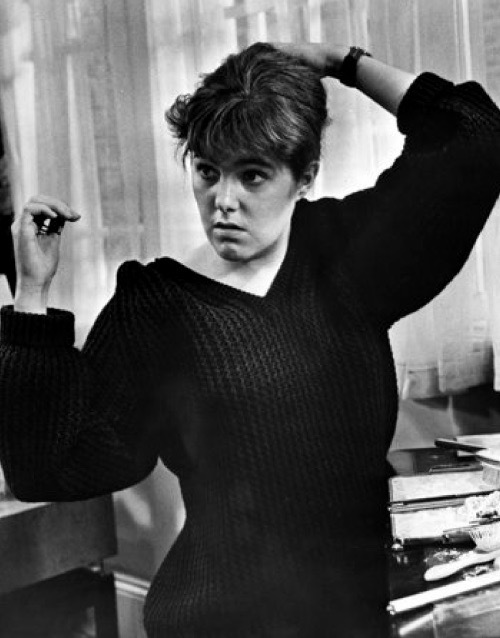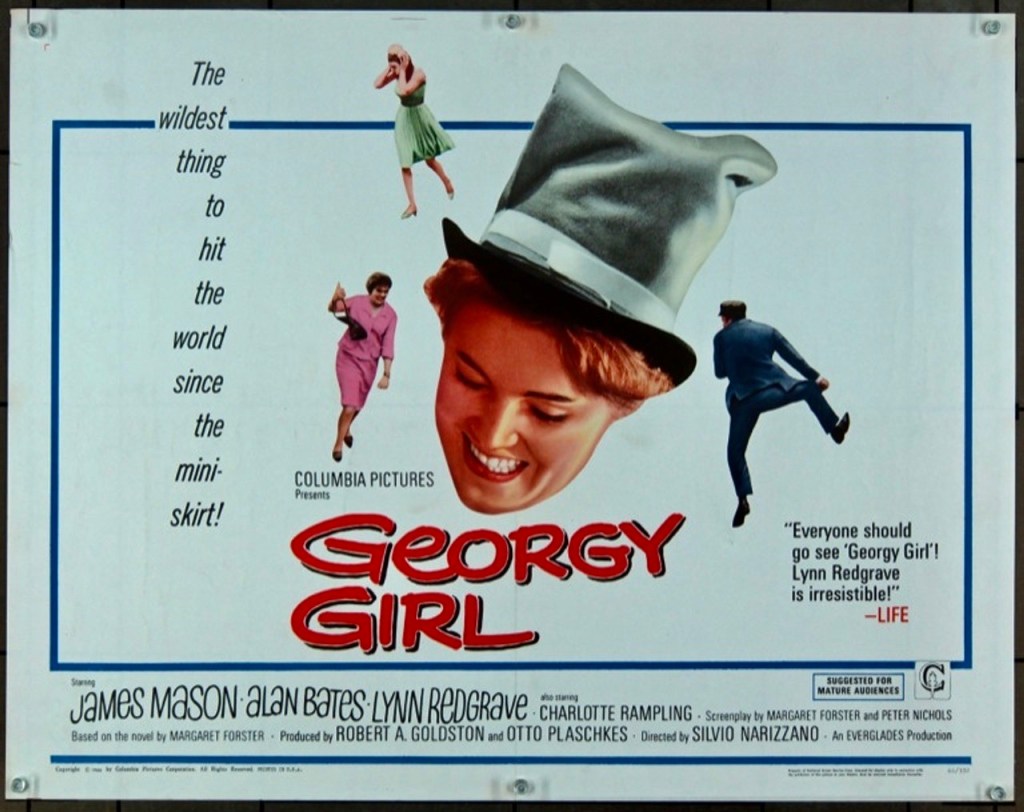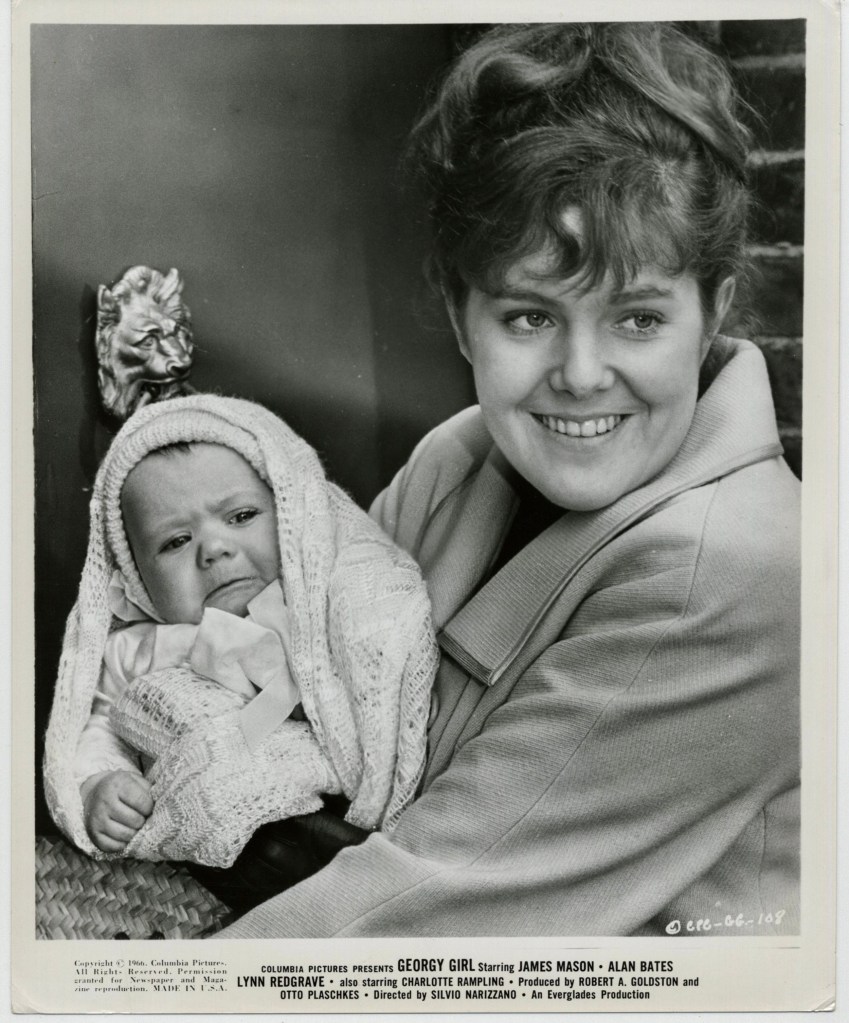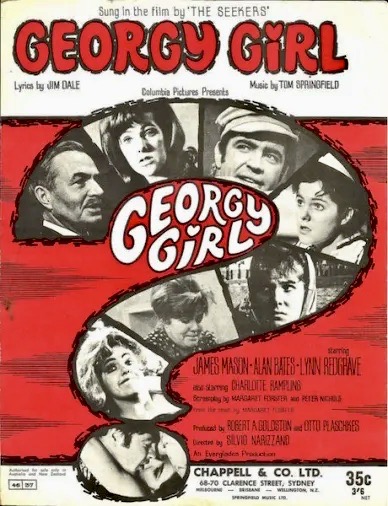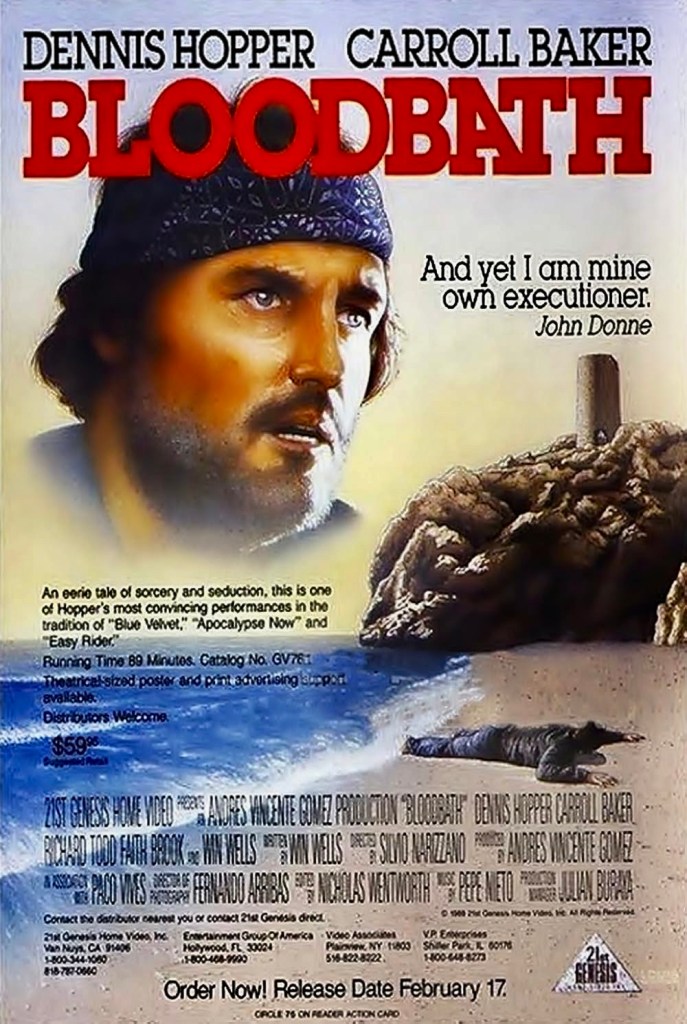A frumpy woman in her early twenties dreams of being loved but despite her continual attempts to have a romance finds herself observing life from the sidelines, barely noticed by those around her. Reduced to a one sentence description, Georgy Girl (1966) sounds dreary and depressing but on-screen this tale of a desperately lonely woman unfolds as a madcap, often irreverent farce which at times is cruelly indifferent to the sad-sack characters it parades before us. This is a film where tone is everything and Georgy Girl, directed by Silvio Narizzano, is distinctively different in this respect, standing out from countless other cinematic tearjerkers about ugly ducklings and lonely spinsters. The film also captures London at the height of the Swingin’ Sixties when everything seemed like a put-on or a come-on.
Georgy Girl was Lynn Redgrave’s first starring film role and her exuberant performance won her an Oscar nomination for Best Actress that year (she was up against her own sister Vanessa in Morgan! but they lost to Elizabeth Taylor for Who’s Afraid of Virginia Woolf?). The film was also a mid-career high point for James Mason in the supporting role of James Leamington, the wealthy employer of Georgy’s parents and a love-struck suitor who wants Georgy to be his mistress. Mason later admitted that “not since The Seventh Veil (1946) had I been connected with such a palpable hit.” Not only did he receive top billing over his co-stars in the credits but his performance was also Oscar nominated (in the Best Supporting Actor category).
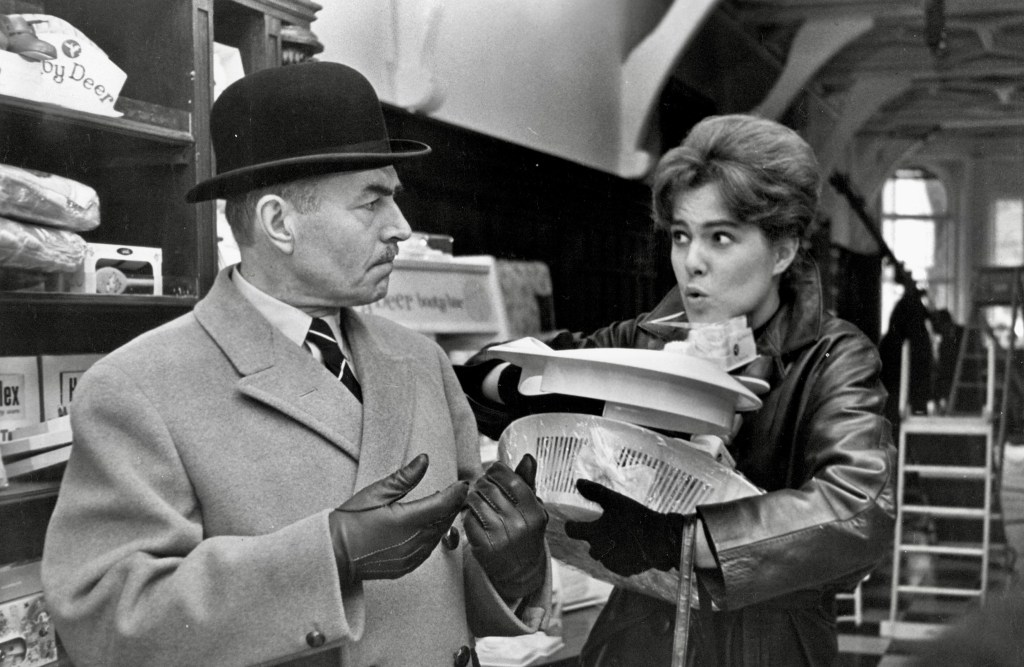
In the biography James Mason: Odd Man Out by Sheridan Morley, Lynn Redgrave recalled the filming of Georgy Girl and her admiration for James Mason: “I couldn’t have had a better start than with James. From the very first day on the set he treated me as an equal, never patronizing but always ready with advice and encouragement if you seemed to need it. They kept pulling the plug on the film because they said that James and I and Alan Bates didn’t add up to much at the box office, but in the end we got it made because of James’s enthusiasm for the quirkiness of the story, and the chance it gave him to go back to his Yorkshire accent. He took very little money for it, and we all thought it was just going to be a low-budget release, so when it became such a huge success it was all the more lovely for those of us who’d always had faith in it.”
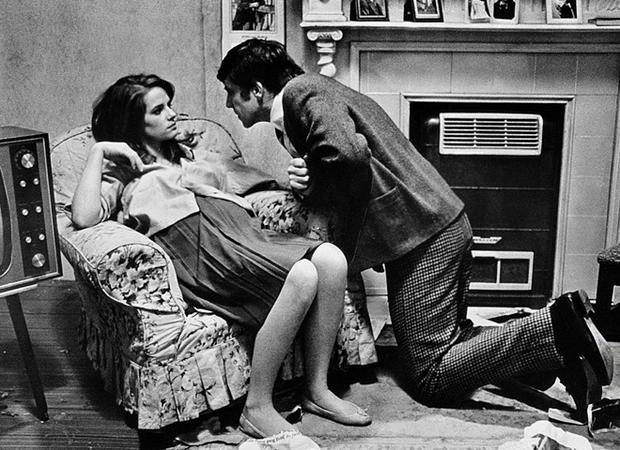
No less important to the success of Georgy Girl were Alan Bates and Charlotte Rampling in supporting roles and who were still relatively unknown actors at the time. Bates, cast as the irresponsible Jos, would become a leading man within the year, scoring excellent reviews for his work in King of Hearts (1966) and Far From the Madding Crowd (1967). By the end of the decade, he had proved himself to be one of England’s most powerful dramatic actors, thanks to outstanding performances in Women in Love (1969) and The Go-Between (1970).
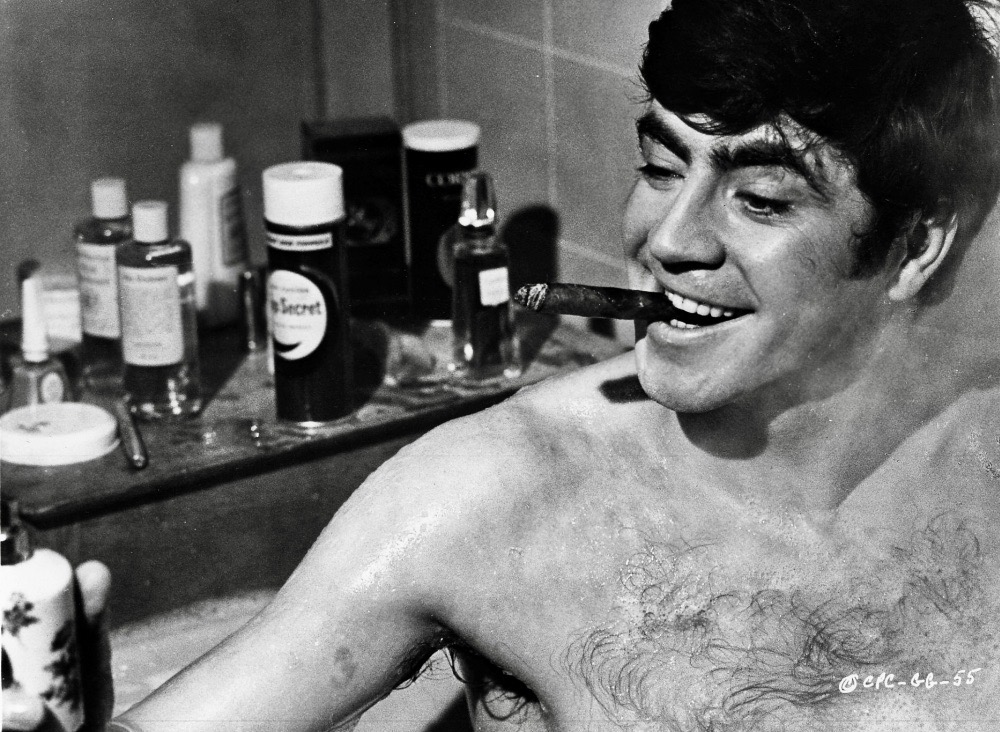
Charlotte Rampling, on the other hand, playing Georgy’s bitchy roommate Meredith, didn’t emerge as a major actress until her controversial role in The Night Porter opposite Dirk Bogarde in 1974. However, her cynical presence in Georgy Girl is unforgettable. From her unapologetic pursuit of hedonist pleasure to the total contempt she feels for her own pregnant state, Rampling’s Meredith is a completely amoral creature, one whose behavior shocked some moviegoers at the time, particularly her mean-spirited remarks about abortion, marriage and relationships.
In an interview by Graham Fuller for Cineaste, Rampling would later remark on the character of Meredith: “Before Georgy Girl, I’d played zany British girls—fun parts. I played my character in Georgy Girl with verve and style and wit, and I thought she was fabulous, but people thought she was a monster. I was hated after that film, but I realized that these kind of women were much more interesting to play than the little, pretty, soppy ones. Possibly my looks—my face—didn’t really attract those kinds of roles. And it was from then on that I knew I would need to seek out women who really had something to say and not court, in any sense, popularity or love.”
If Meredith emerges as a selfish hedonist, Georgy is no saint herself and she’s anything but a shrinking violet when it comes to expressing herself, no matter how awkward and painful it might be. In an interview with Leonard Probst, Redgrave later admitted that she saw Georgy as “very ruthless. Most people saw her as a sweet softie. I don’t think she was a softie at all. She was manipulating and very shrewd. People loved her, I think, because they recognized their own terrible faults and were glad to see them put up on the screen.”
Yet, in spite of the film’s huge success, not all critics were in love with Georgy Girl. Pauline Kael was one of the few reviewers to question the film’s ambivalent tone and wrote, “At Georgy Girl you may find yourself laughing but intermittently, in discomfort or even stupefaction, asking yourself, “What are they doing in this movie? Do they know what they’re doing?” They’re obviously very clever, very talented, but what’s going on?…Lack of control is made grotesquely cute.”
Still, the majority opinion was best summed up by London’s Daily Express which stated that “the whole film is a delight.” In later years, some critics and movie buffs would point to Georgy Girl as a pro-feminist film before its time and Charlotte Rampling even stated in an interview with Siobhan Synnot for The Sunday Post: “Meredith was great, she was the start of women saying, ‘Just because you can impregnate us, we are not here just to do this.’ She was the beginning of feminism…” But Meredith is a particularly negative image for a budding feminist and Georgy is certainly not a liberated woman either. In fact, the ending is ambiguous since Georgy decides to marry Leamington out of convenience, not love, as he seems to be a better, more stable provider than the undependable Jos. Leamington also comes off at times like a lecherous old man and a happy ending for this union seems dubious, according to film critic Mark Fraser, who wrote Georgy “ultimately looks set to remain stranded in the same stagnant pond. Or, to put it bluntly (and contrary to what the plot might otherwise be suggesting), it’s highly unlikely there will ever be a completely satisfactory existence for this woman.”
When you think about it, the filmmakers’ attitude toward Georgy seems to fluctuate between amusement, affection and derision, especially in an awkward sequence where Georgy makes a fool out of herself performing “Whole Lotta Woman,” a risqué, Mae West-type musical number at a party. Perhaps the screenplay lacked a consistent vision of Georgy. Margaret Forster took a stab at adapting her novel to the screen first but then playwright Peter Nichols (A Day in the Death of Joe Egg) was brought in as screenwriter and completely rewrote the dialogue.

Even the promotional materials for the movie seem to send mixed messages as in the poster that proclaims “Georgy Girl is Big!” Do they mean big as in a box-office hit or are they referring to Georgy’s body size? Certainly by today’s standards, Georgy is not even that overweight and, at times, Lynn Redgrave’s natural attractiveness is allowed to shine through the façade of a dowdy spinster stereotype. Still, some male critics at the time were completely misogynistic in their response to Georgy such as Bosley Crowther of The New York Times, who described her as, “a grimly good-natured young woman who has the grace of a growing pachyderm.”
What is fascinating is the fact that Lynn Redgrave was not the original choice for Georgy. According to an interview with director Silvio Narizzano, “We always had Vanessa Redgrave down as the leading lady … I had only one question to ask her: how was she going to play this girl who looked like the back of a bus? Vanessa was the beautiful Greta Garbo of the sixties … I wanted to know on what terms Vanessa was going to do the part so that we could alter the script accordingly. And we did …we took out all the stuff about her looking like the back end of a bus because it didn’t make sense anymore.”
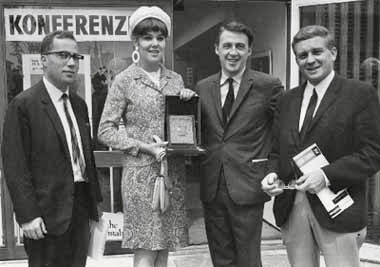
Vanessa, however, pulled out of the film a week before production began and suggested her sister Lynn as a replacement (Rachel Kempson, Vanessa and Lynn’s real-life mother, also has a small role as Leamington’s wife). The rest is history and Lynn Redgrave’s performance is part of the reason for the movie’s success but the actress later had some misgivings, stating, “All I got sent for a while were scripts about an ungainly character bumbling about and getting tangled in peoples lives.” For years, Redgrave struggled to match her success in Georgy Girl on the big screen and had much better luck on the stage and in television productions. It wasn’t until the late 1990s that she finally enjoyed some well-deserved critical acclaim for her performances in Shine (1996) and Gods and Monsters (1998), which earned her an Oscar nomination for Best Supporting Actress.

Another person who struggled to match the success of Georgy Girl was the director. A native of Montreal, Canada, born to Italian-American parents, Silvio Narizzano began his career at the Canadian Broadcasting Corporation as an assistant to Norman Jewison and other directors before relocating to the U.K. where he helmed numerous TV productions. He made his film debut with the Hammer horror production Die, Die! My Darling! aka Fanatic (1965) featuring Tallulah Bankhead in her final on-screen performance. Blue (1969), an arty western starring Terence Stamp, was Narizzano’s follow-up film to Georgy Girl and proved to be a flop, which was unanimously panned by critics.
Narizzano’s track record after this was spotty, although Loot (1970), based on Joe Orton’s comedic play, was nominated for the Palme d’Or at the Cannes Film Festival. Other eclectic credits include the Italian crime drama Redneck (1973) with Franco Nero and Telly Savalas, Bloodbath aka The Sky is Falling (1975), a Spanish production featuring Dennis Hopper in his most self-indulgent performance as a junkie poet, and The Class of Miss MacMichael (1978), a comedy-drama that pits schoolteacher Glenda Jackson against headmaster Oliver Reed and a classroom of juvenile delinquents.
Of his later work, Narizzano’s 1977 TV adaptation of William Inge’s Come Back, Little Sheba with Laurence Olivier and Joanne Woodward was a high point. So was Why Shoot the Teacher? (1977), a rarely seen and overlooked gem about a teacher (Bud Cort) trying to adapt to life in an isolated farming community in Saskatchewan, Canada in 1935.
One final bit of trivia: Georgy Girl also received Academy Award nominations for Best Cinematography (Ken Higgins) and Best Song, which went on to become a top forty hit recorded by The Seekers. The theme song, which was written by Tom Springfield, brother of Dusty Springfield, with lyrics by Jim Dale (from the “Carry On” comedy film franchise), was another factor in bringing a sunny, upbeat vibe to a marginalized heroine.
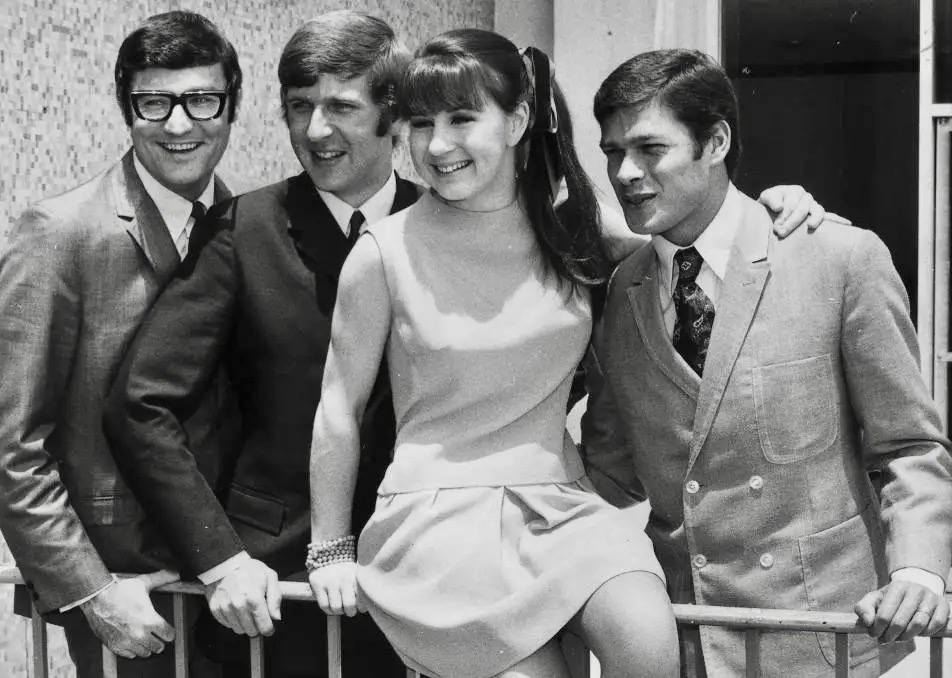
Georgy Girl has been released on VHS and DVD over the years but the best option is the Blu-ray limited edition released by Indicator/Powerhouse Films in August 2020. The disc includes an archival interview with Charlotte Rampling, interviews with screenwriter Peter Nichols and art director Tony Woollard, a 40-page booklet on the film and other extras.
*This is a revised and expanded version of an article that originally appeared on the Turner Classic Movies website.
Other Links of Interest:
https://www.altfg.com/film/silvio-narizzano/
https://variety.com/2011/film/news/director-silvio-narizanno-dies-1118040998/
https://www.thefamouspeople.com/profiles/lynn-redgrave-38622.php


